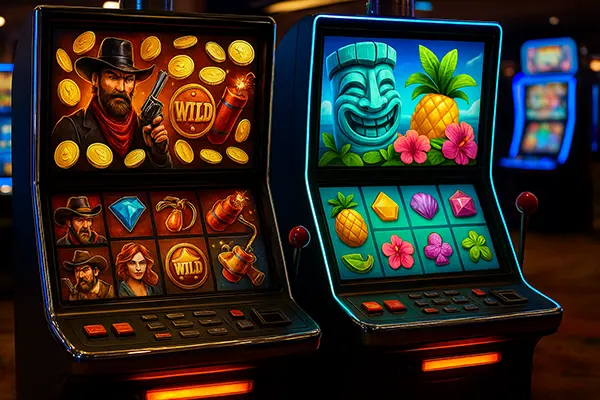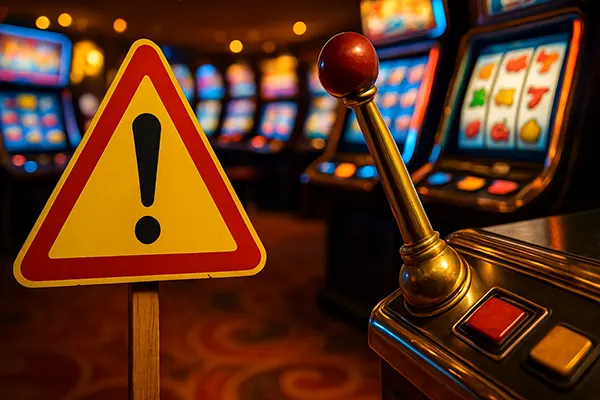
High Volatility vs Low Volatility Slots: How to Choose Your Playing Style
Understanding the difference between high volatility and low volatility slots is essential for anyone looking to refine their approach to online slot gaming. Volatility, also referred to as variance, determines how often and how much a slot pays out. This knowledge can significantly influence both your bankroll management and the enjoyment you derive from the game. By assessing your risk tolerance, playing habits, and entertainment goals, you can make more informed choices about which type of slot suits you best.
What Are High Volatility Slots?
High volatility slots are known for delivering larger payouts, but less frequently. This means you may encounter longer periods without a win, followed by potentially substantial rewards. They are designed for players who are willing to take higher risks in exchange for the possibility of bigger returns. These games often feature bonus rounds, free spins, and multipliers that can lead to significant wins.
From a strategic perspective, high volatility slots require a larger bankroll and more patience. Since the wins are infrequent, it’s important to manage your stakes carefully to avoid exhausting your funds too quickly. Players who enjoy the thrill of chasing large jackpots or progressive prizes often prefer this type of game.
Examples of high volatility slots from leading software providers in 2025 include titles like “Dead or Alive II” by NetEnt and “Money Train 4” by Relax Gaming. These games maintain their popularity due to their ability to produce substantial payouts, even though they demand resilience from players during dry spells.
Advantages and Disadvantages of High Volatility Slots
One of the main advantages of high volatility slots is the potential for significant wins that can greatly exceed your initial stake. This makes them appealing to risk-takers and those who enjoy a high-adrenaline gaming experience. Additionally, these games often incorporate intricate features and detailed graphics, enhancing the overall entertainment value.
However, the main drawback is the higher risk of long losing streaks. This can be discouraging for players with smaller budgets or those who prefer a steady stream of small wins. It’s crucial to approach these games with realistic expectations and a willingness to handle the variance without frustration.
High volatility slots are best suited for players who are financially and mentally prepared for the swings in gameplay. A well-structured bankroll plan and the discipline to stick to it are vital for maximising enjoyment and potential profit from these games.
What Are Low Volatility Slots?
Low volatility slots provide more frequent wins, but the payout amounts are typically smaller. This style of game is ideal for players who prefer a slower, steadier approach without the large bankroll requirements of high volatility options. Low volatility slots can offer a longer playing time, allowing you to enjoy the game’s features without rapid losses.
These games are especially popular among casual players and those new to slot gaming. The regular payouts help maintain engagement and excitement, even if the wins are modest. Many low volatility slots focus on entertainment value with vibrant themes, smooth animations, and straightforward bonus features.
In 2025, popular examples include “Starburst XXXtreme” by NetEnt in its adjusted low volatility mode and “Aloha! Cluster Pays” by NetEnt, both of which are praised for consistent win patterns and accessible gameplay.
Advantages and Disadvantages of Low Volatility Slots
The main benefit of low volatility slots is their ability to sustain your bankroll over longer sessions. This makes them suitable for players who enjoy prolonged gameplay without the risk of rapid losses. The frequent small wins can create a sense of steady progress and ongoing engagement.
On the downside, low volatility slots rarely offer life-changing jackpots. Players seeking massive payouts may find these games less exciting compared to their high volatility counterparts. The smaller wins can feel repetitive over time, especially for those who thrive on unpredictability and high-stakes action.
Ultimately, low volatility slots cater to a specific type of player who values stability, extended playtime, and a relaxed gaming experience over high-risk, high-reward scenarios.

How to Choose the Right Slot Volatility for You
Selecting the right slot volatility depends on your personal gaming style, financial resources, and overall goals. The first step is to assess your risk tolerance: if you can handle long dry spells in pursuit of large wins, high volatility slots may be the right choice. Conversely, if you prefer frequent wins to keep the game engaging, low volatility slots are more suitable.
Another factor to consider is your bankroll size. High volatility slots generally require a larger budget to withstand losing streaks, whereas low volatility games allow you to play for longer with smaller funds. Time availability also plays a role, as high volatility sessions may be shorter without careful bankroll management.
Combining both types into your gaming routine can provide variety and balance. By alternating between high and low volatility games, you can enjoy the excitement of big win potential alongside the steady entertainment of regular payouts.
Tips for Making an Informed Decision
Start by researching the volatility level of each slot you are interested in, as most reputable developers provide this information. You can also review payout frequency and average win sizes through player forums or casino reviews. Testing games in demo mode can help you understand their behaviour without financial risk.
Keep track of your playing patterns and results to determine which volatility level aligns best with your preferences. Adjust your bet sizes accordingly to optimise your gaming sessions, and always set limits to ensure responsible play. This approach will help you maximise both enjoyment and potential returns.
Lastly, remember that slots are games of chance. While understanding volatility can improve your strategy, there is no guaranteed method for winning. Focus on entertainment and choose games that suit your personal style for the most satisfying experience.
